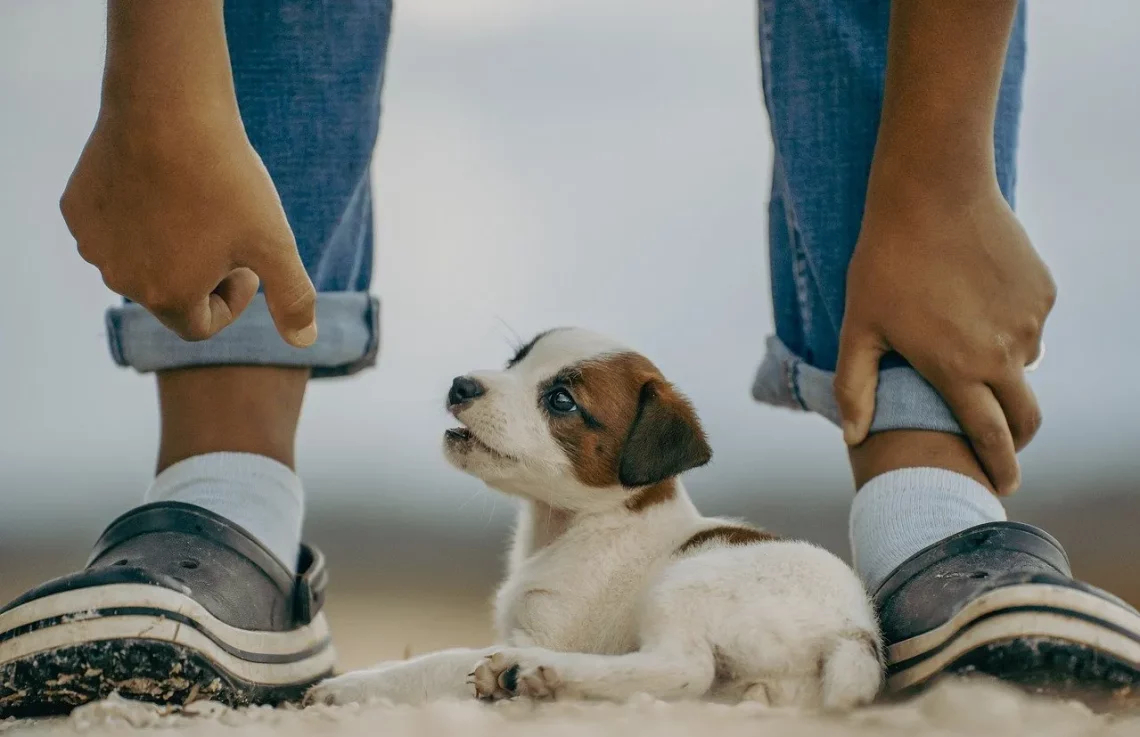
Can Cats and Rabbits Get Along? Tips for a Peaceful Coexistence
Cats and rabbits are two of the most beloved pets around the world, each bringing unique charm and joy to their owners. While they may belong to different species, many pet enthusiasts find the idea of having both a cat and a rabbit in the same household appealing. However, the question of whether these two animals can coexist peacefully is one that many potential pet owners ponder. The dynamics between cats and rabbits can be complex, influenced by their instincts, behaviors, and personalities. Understanding these differences is crucial for ensuring a harmonious living environment.
Cats are natural predators, driven by instincts that have been honed through centuries of evolution. They exhibit hunting behaviors, including stalking and pouncing, which can be alarming to a more timid animal like a rabbit. On the other hand, rabbits are prey animals, constantly on the lookout for potential threats. This inherent contrast can lead to misunderstandings and, if not managed correctly, can result in stress or conflict. However, with the right approach, it is possible for cats and rabbits to live together peacefully.
Creating a safe and nurturing environment is key to fostering a good relationship between these two pets. By taking the time to understand their needs, behaviors, and how to introduce them properly, pet owners can pave the way for a peaceful coexistence. In this article, we will explore effective strategies to help cats and rabbits live together in harmony, ensuring that both animals feel secure and happy in their shared space.
Understanding the Behavioral Differences
To facilitate a positive relationship between cats and rabbits, it is essential to grasp their innate behaviors. Cats are primarily solitary hunters, while rabbits are social creatures that thrive in groups. This fundamental behavioral difference can lead to tension if not acknowledged.
Cats possess a strong predatory instinct, often viewing small animals as potential prey. This instinct can manifest in playful behaviors that may seem harmless, such as stalking or pouncing. Unfortunately, these behaviors can frighten rabbits, who are wired to flee from perceived threats. A rabbit’s natural response to danger is to freeze or dart away, which can exacerbate the cat’s instinct to chase. Understanding this dynamic is crucial in preventing accidents and ensuring the safety of both animals.
On the other hand, rabbits require social interaction and stimulation. They are intelligent creatures that benefit from companionship, and while they can bond with humans, they may also form friendships with other animals, including cats. However, the key is to introduce them in a controlled manner.
When bringing a cat and rabbit together, it’s important to monitor their interactions closely. Cats are curious by nature and may approach a rabbit out of interest. This curiosity can be positive, but it can also lead to stress for the rabbit if the cat behaves too aggressively. Gradual introductions are essential, allowing both animals to acclimate to each other’s presence without feeling threatened.
In conclusion, understanding the behavioral differences between cats and rabbits is paramount in fostering a peaceful coexistence. Recognizing their instincts and needs can help pet owners create an environment where both animals feel secure and comfortable.
Proper Introduction Techniques
The process of introducing a cat and a rabbit can be daunting, but with careful planning, it can be done successfully. The key to a successful introduction lies in patience and gradual exposure.
Begin by allowing the animals to become familiar with each other’s scent before any face-to-face interactions. This can be achieved by swapping bedding or toys between the two. This step helps both pets recognize that they share a home, reducing potential anxiety when they eventually meet.
Once they have become accustomed to each other’s scent, it’s time for the first visual introduction. Choose a neutral space where neither pet feels territorial. For the initial meeting, it is advisable to keep the rabbit in a secure enclosure, such as a cage or a pen, while allowing the cat to observe from a distance. This setup ensures that the rabbit feels safe and can escape if necessary, while the cat satisfies its curiosity without direct contact.
During these initial meetings, observe both animals closely. Look for signs of distress in the rabbit, such as thumping or hiding, and in the cat, signs of aggression or intense curiosity. If either animal shows signs of stress, it’s important to separate them and allow more time for acclimatization.
As they become more comfortable with each other, you can gradually increase their interactions. Allow them to share space under supervision, but always be ready to intervene if necessary. Positive reinforcement is crucial during this process; reward both pets with treats and praise for calm behavior.
Over time, most cats and rabbits can learn to coexist peacefully. However, it’s important to remember that every animal is unique, and some may take longer to adjust than others.
In summary, the key to successfully introducing a cat and a rabbit lies in taking gradual steps, monitoring their behaviors, and ensuring a safe environment. With patience and perseverance, pet owners can help foster a lasting friendship between these two beloved pets.
Creating a Safe Living Environment
Once the initial introductions have been made, it’s vital to create a safe and comfortable environment for both your cat and rabbit. This step is crucial to maintain harmony and ensure the well-being of both animals.
Firstly, it’s important to designate separate spaces for each pet. Cats are naturally territorial, and having their own space allows them to feel secure. This space should include a cozy bed, scratching posts, and toys that cater to their hunting instincts. For rabbits, a spacious area with a soft bedding material, hiding spots, and chew toys can provide comfort and security.
In addition to separate spaces, ensure that the common areas are free of hazards. Secure any cords, small objects, or toxic plants that may pose a danger to either pet. Rabbits love to chew, and they may be attracted to electrical cords or household items that can lead to injury.
Supervision is also key in preventing altercations. Even after successful introductions, continue to monitor their interactions, particularly during playtime. Cats may engage in rough play that could inadvertently harm the rabbit, so it’s essential to intervene if necessary.
Feeding time should also be carefully managed. Cats and rabbits have different dietary needs, and it’s vital to prevent them from eating each other’s food. Establish feeding areas that are separate and inaccessible to the other pet. This measure not only prevents dietary issues but also reduces competition and potential conflicts during meals.
Lastly, consider providing vertical spaces for the cat, such as cat trees or shelves, where they can observe their environment from above. This setup can satisfy the cat’s natural instinct to perch high while giving the rabbit space on the ground to feel safe.
In conclusion, creating a safe living environment is essential for ensuring a peaceful coexistence between cats and rabbits. By providing separate spaces, supervising interactions, and managing hazards, pet owners can cultivate a harmonious atmosphere for both pets.
Encouraging Positive Interactions
Encouraging positive interactions between cats and rabbits requires intentional effort and creativity. Building a bond between the two animals can take time, but with the right strategies, it can lead to a fulfilling companionship.
One effective way to promote positive interactions is through shared playtime. Engage both pets in activities that encourage them to work together, such as interactive toys or games that stimulate their instincts. For example, using a feather wand to entice the cat while allowing the rabbit to observe can create a fun dynamic.
Treats can also play a significant role in fostering positive associations. Whenever the cat and rabbit are calm in each other’s presence, offer them treats to reinforce this behavior. Over time, they will begin to associate each other with positive experiences, reducing any underlying tension.
Another approach is to create a routine that includes both pets. For instance, you can designate specific times for joint play or feeding, allowing them to share a space in a controlled manner. This routine can help establish familiarity and comfort, making interactions feel more natural.
Training can also be beneficial. Teaching the cat basic commands, such as “sit” or “stay,” can help manage their behavior around the rabbit. Likewise, training the rabbit to perform simple tricks can build confidence and provide mental stimulation.
Lastly, patience cannot be overstated. Every animal has its own pace when it comes to forming relationships. Some cats may take longer to adjust, while rabbits may need extra time to feel secure. Always prioritize the comfort and safety of both pets, and be prepared to adjust your approach as needed.
In conclusion, encouraging positive interactions between cats and rabbits is achievable through shared activities, positive reinforcement, and routine. With time and effort, pet owners can cultivate a loving and harmonious relationship between these two animals.
In summary, while the prospect of having a cat and a rabbit coexist may seem challenging, it is entirely possible with the right knowledge and approach. Understanding their behavioral differences, utilizing proper introduction techniques, creating a safe environment, and encouraging positive interactions are essential steps in ensuring a harmonious household.
It is important to note that this article is not a substitute for professional veterinary advice. If you have any health concerns regarding your pets, please consult with a qualified veterinarian.




